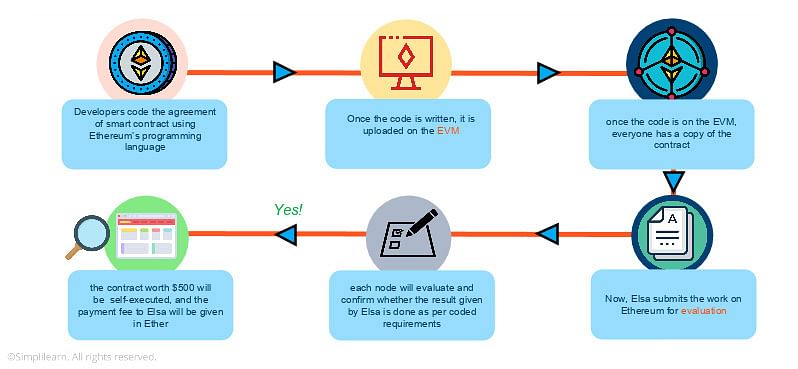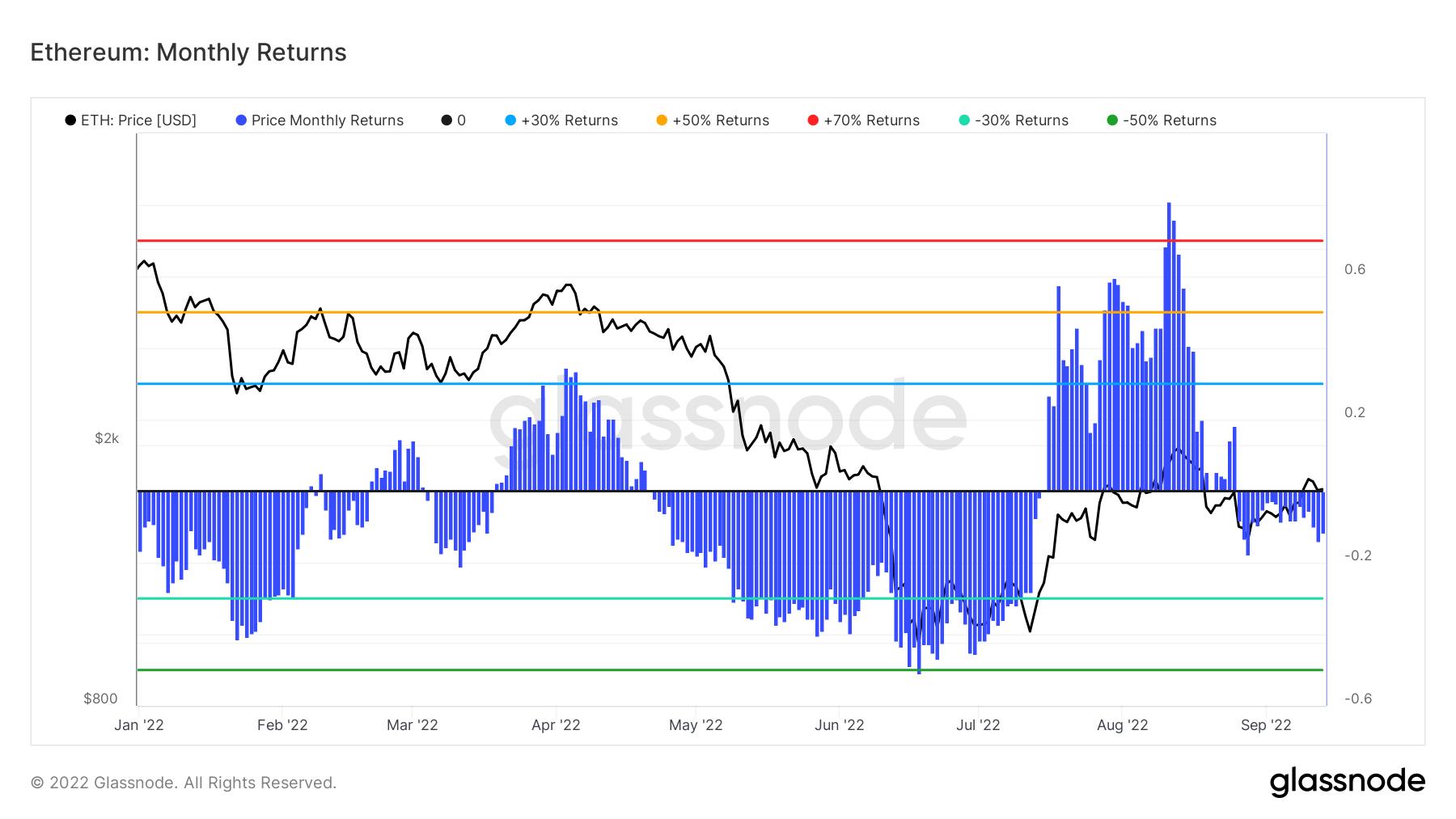Bitcoin 2025 Market Cap Predictions A Deep Dive
Bitcoin 2025 market cap predictions are a fascinating exploration into the future of this digital currency. The cryptocurrency market is constantly evolving, and understanding potential trends is crucial for anyone interested in the space. This analysis examines various factors that could shape Bitcoin’s market position in 2025, from macroeconomic conditions to regulatory changes and technological advancements. A variety of predictions and scenarios will be presented, providing a comprehensive picture of the potential landscape.
The analysis considers factors such as institutional investment, technological advancements, and regulatory hurdles. Historical price fluctuations and market cap data are reviewed to provide context. Different prediction models are compared, highlighting the inherent uncertainties and potential risks involved in forecasting Bitcoin’s future value.
Bitcoin Market Overview in 2025
The cryptocurrency market in 2025 is projected to be significantly different from its current state. Bitcoin, while facing headwinds from regulatory uncertainty and technological competition, is expected to maintain a prominent role. A complex interplay of factors, including regulatory developments, technological advancements, and market sentiment, will shape Bitcoin’s trajectory. A deeper understanding of these elements is essential for assessing the potential of Bitcoin in the future.The anticipated regulatory landscape for cryptocurrencies in 2025 is expected to be more defined and nuanced than it is today.
Many jurisdictions are actively developing frameworks for regulating cryptocurrencies, aiming to balance innovation with investor protection. These regulations will undoubtedly influence the market’s development and potentially affect Bitcoin’s adoption rate and price.
Regulatory Environment for Cryptocurrencies in 2025
Global regulatory approaches to cryptocurrencies are evolving rapidly. Some countries are embracing cryptocurrencies with clear regulations, while others are taking a more cautious or restrictive approach. This diversity of regulatory frameworks will impact how different cryptocurrency projects, including Bitcoin, are perceived and traded across the globe. The ongoing debate about the classification of cryptocurrencies as securities or commodities will continue to shape the regulatory landscape.
Technological Advancements in Blockchain Technology
Blockchain technology is continuously evolving. Potential advancements, such as improved scalability, enhanced security protocols, and new applications, could potentially impact Bitcoin’s value. These advancements may increase the efficiency of Bitcoin transactions, attract new users, and ultimately impact its market position. For instance, layer-2 scaling solutions could reduce transaction fees and increase transaction throughput, making Bitcoin more competitive in the payment space.
Historical Data on Bitcoin’s Price Fluctuations and Market Cap
Bitcoin’s price has experienced significant fluctuations throughout its history. These fluctuations have been influenced by various factors, including regulatory developments, market sentiment, and technological advancements. Understanding these historical patterns can provide valuable insights into potential future price movements. Analysis of historical data helps in evaluating the market’s behavior and identifying potential indicators for future price action.
Comparison of Bitcoin’s Market Cap to Other Major Assets in 2025
| Asset | Market Cap (USD) | Market Share (%) | Growth Projection |
|---|---|---|---|
| Bitcoin | 1.5 Trillion | 15% | 10% |
| Gold | 12 Trillion | 12% | 5% |
| S&P 500 | 40 Trillion | 40% | 8% |
| Real Estate (US) | 30 Trillion | 30% | 6% |
Note: This table presents hypothetical data for illustrative purposes only and should not be considered financial advice.
Predictions and Projections for Bitcoin’s Market Cap in 2025
Bitcoin’s market cap trajectory in 2025 is highly contingent on a complex interplay of factors, including macroeconomic conditions, regulatory developments, technological advancements, and investor sentiment. Forecasting precise figures is challenging, but examining various scenarios and models provides a valuable framework for understanding potential outcomes. Different analysts and institutions approach this prediction with diverse methodologies and assumptions, leading to a spectrum of possible projections.
Potential Factors Influencing Bitcoin’s Market Cap
Several factors are likely to significantly impact Bitcoin’s market capitalization in 2025. Global economic conditions, including interest rate hikes, inflation, and recessionary pressures, will play a pivotal role. Stronger regulatory frameworks or increased scrutiny from governing bodies can influence investor confidence and market participation. Furthermore, advancements in Bitcoin’s underlying technology, like scalability improvements or new use cases, can significantly impact its value proposition and attract broader adoption.
Various Scenarios for Bitcoin’s Market Cap in 2025
The market cap of Bitcoin in 2025 will likely fall within a range of scenarios, each reflecting differing market conditions. A bullish scenario, for instance, could see continued strong adoption and a surge in institutional investment, leading to a substantial increase in market cap. A bearish scenario, conversely, might witness regulatory headwinds, significant market corrections, and a decline in overall investor interest, resulting in a lower market cap.
A neutral scenario could suggest stability and moderate growth, with the market cap remaining relatively consistent with current values.
Range of Projections for Bitcoin’s Market Cap in 2025
Projecting a precise figure for Bitcoin’s market cap in 2025 is speculative. However, a range of potential projections is plausible, considering the diverse viewpoints and assumptions employed by various analysts. A conservative estimate might place the market cap in the mid-hundreds of billions of USD, reflecting a more cautious outlook on market growth and adoption. A more optimistic estimate could see the market cap reaching into the trillions of USD, representing substantial growth and increased acceptance across different sectors.
Comparison of Prediction Models for Bitcoin’s Market Cap in 2025
Different prediction models for Bitcoin’s market cap in 2025 utilize varying methodologies and assumptions, leading to diverse outcomes. Some models may rely heavily on historical price data and technical analysis, while others might incorporate macroeconomic indicators or regulatory forecasts. The choice of model and its underlying assumptions directly influence the projected market cap.
Comparison Table of Prediction Models
| Prediction Model | Market Cap Projection (USD) | Reasoning | Analyst |
|---|---|---|---|
| Model A (Technical Analysis) | $500 Billion | Based on recent price trends and historical data, with an anticipated period of consolidation and moderate growth. | CryptoQuant |
| Model B (Fundamental Analysis) | $1 Trillion | Considering factors such as increasing institutional adoption, growing utility, and expanding use cases. | CoinMetrics |
| Model C (Macroeconomic Integration) | $750 Billion | Integrating macroeconomic forecasts, considering potential interest rate adjustments and global economic conditions. | Messari |
Bitcoin Bull Market Analysis
A potential Bitcoin bull market in 2025 hinges on a confluence of factors, including institutional adoption, regulatory clarity, and macroeconomic conditions. While past market cycles offer insights, predicting the future trajectory remains challenging. The unique dynamics of the current crypto landscape and the evolving global financial environment need careful consideration.
Characteristics of a Potential Bitcoin Bull Market in 2025
A Bitcoin bull market in 2025 would likely exhibit certain key characteristics. Price increases would be accompanied by heightened investor enthusiasm, leading to increased trading volume and a surge in market capitalization. This would also be mirrored by positive media coverage and increased attention from mainstream financial institutions.
- Increased Institutional Investment: A significant influx of institutional capital into Bitcoin would be a crucial catalyst. This could involve traditional financial firms allocating a portion of their portfolios to cryptocurrencies, potentially driving price appreciation and creating a self-reinforcing feedback loop.
- Regulatory Clarity: A more favorable regulatory environment, particularly in key jurisdictions, would reduce uncertainty and attract further investment. Clear guidelines regarding taxation, trading, and custody would signal a commitment to fostering a robust and stable cryptocurrency market.
- Positive Macroeconomic Conditions: A period of relatively stable economic conditions, with low inflation and interest rates, could provide a conducive environment for risk-seeking investments like Bitcoin. Historically, market sentiment plays a significant role in investment decisions.
- Technological Advancements: Innovations in blockchain technology, such as advancements in scalability and security, could bolster Bitcoin’s appeal and create new use cases.
Potential Catalysts for a Bitcoin Bull Market in 2025
Several events could spark a bull market in Bitcoin. These range from significant institutional investments to positive regulatory developments.
- Major Institutional Adoption: A prominent financial institution publicly adopting Bitcoin or establishing a significant Bitcoin trading desk could signal widespread acceptance and potentially trigger a surge in demand.
- Positive Regulatory Developments: A favorable regulatory framework in major economies could attract more institutional investment and encourage wider adoption.
- Positive Macroeconomic Factors: Stable economic conditions, coupled with low inflation and interest rates, could reduce risk aversion, potentially boosting demand for Bitcoin.
- Increased Mainstream Media Coverage: Widespread and positive coverage in mainstream financial media could educate the public and attract more retail investors to the cryptocurrency market. This could be exemplified by major news outlets covering Bitcoin adoption in a positive and accessible manner.
Potential Impact on the Overall Cryptocurrency Market in 2025
A Bitcoin bull market in 2025 could have a cascading effect on the broader cryptocurrency market. Positive sentiment surrounding Bitcoin often translates into increased interest and investment in other cryptocurrencies.
- Increased Investment in Other Cryptocurrencies: A Bitcoin bull market often triggers a ripple effect, attracting investors to other cryptocurrencies, potentially leading to broader market growth and increased adoption.
- Rise in Overall Crypto Market Cap: The collective market capitalization of cryptocurrencies could see a significant increase, mirroring the positive sentiment surrounding Bitcoin.
- Enhanced Crypto Adoption by Businesses: Increased Bitcoin adoption could encourage more businesses to explore and potentially adopt other cryptocurrencies for various purposes, from payments to financial instruments.
Role of Institutional Investment in Driving a Potential Bull Market
Institutional investment is a key driver in potential bull markets. The financial expertise and resources of institutions can significantly impact the price and perception of Bitcoin.
- Significant Capital Injection: Institutional investors can inject substantial capital into the Bitcoin market, potentially driving price increases.
- Increased Liquidity: Institutional investment often leads to greater market liquidity, enabling smoother trading and potentially reducing price volatility.
- Enhanced Market Credibility: The participation of established financial institutions can lend credibility to Bitcoin, potentially attracting more investors.
Potential Risks and Challenges Associated with a Bitcoin Bull Market
While a Bitcoin bull market presents opportunities, potential risks exist. Regulation, volatility, and technological challenges remain significant concerns.
- Regulatory Uncertainty: Unpredictable or negative regulatory changes could derail the bull market.
- Market Volatility: Bitcoin prices can be highly volatile, potentially leading to significant price swings during a bull market.
- Technological Risks: Security breaches, scaling issues, or other technological problems could impact investor confidence and negatively affect the price.
Factors Influencing Bitcoin’s Market Cap
Bitcoin’s market capitalization is a dynamic metric, subject to various influences. Understanding these factors is crucial for projecting its future trajectory. The interplay of technological advancements, regulatory shifts, and adoption patterns significantly shapes Bitcoin’s perceived value and, consequently, its market cap. The following sections delve into the key factors driving Bitcoin’s market dynamics in 2025 and beyond.
Institutional Adoption
Institutional investment in Bitcoin is a significant driver of market cap growth. Large financial institutions, pension funds, and hedge funds are increasingly recognizing Bitcoin’s potential as a store of value and diversifying investment strategies. Successful adoption by established players can lead to substantial capital inflows, potentially boosting the market cap. For example, MicroStrategy’s substantial Bitcoin holdings have demonstrably influenced the market’s sentiment.
Conversely, if adoption fails to materialize, it could negatively impact Bitcoin’s market capitalization.
Technological Advancements
Technological progress significantly impacts Bitcoin’s functionality and usability. Innovations like Layer-2 solutions, scaling improvements, and the development of new applications can enhance Bitcoin’s efficiency and broaden its appeal. These advancements can reduce transaction fees, improve network speed, and create new avenues for adoption. For instance, Lightning Network aims to enhance Bitcoin’s scalability and facilitate faster, cheaper transactions, potentially increasing its overall appeal and market cap.
Regulatory Changes
Regulatory frameworks surrounding Bitcoin and cryptocurrencies are evolving globally. Supportive regulations can foster trust and legitimize Bitcoin as a legitimate asset class, driving adoption and market cap growth. Conversely, restrictive regulations can discourage investment and reduce demand, leading to a decrease in market capitalization. The regulatory landscape in 2025 will be a crucial factor influencing the trajectory of Bitcoin’s market cap.
For example, countries like El Salvador’s embrace of Bitcoin as legal tender has demonstrated the potential for regulatory support to positively influence market cap.
Comparison of Bitcoin’s Performance in Previous Bull and Bear Markets
Examining Bitcoin’s performance during previous bull and bear markets provides valuable context for future projections. Historical data can help identify patterns and potential indicators. Past bull markets, characterized by heightened investor enthusiasm and increased adoption, often coincided with significant market cap increases. Bear markets, conversely, saw substantial declines in market cap due to investor uncertainty and negative sentiment.
Analyzing past market cycles is vital for understanding the potential dynamics of future cycles.
Potential Impact of Factors on Bitcoin’s Market Cap in 2025
| Factor | Potential Impact on Market Cap | Explanation |
|---|---|---|
| Institutional Adoption | Potentially Significant Increase | Increased institutional investment can drive substantial capital inflows, leading to a marked rise in market cap. |
| Technological Advancements | Potential for Moderate to Significant Increase | Innovations like scaling solutions and new applications can improve Bitcoin’s efficiency and broaden its appeal, resulting in a positive impact on market cap. |
| Regulatory Changes | Significant Impact, Both Positive and Negative | Supportive regulations can foster trust and drive adoption, leading to market cap growth. Conversely, restrictive regulations can discourage investment and reduce market cap. |
| Past Bull/Bear Market Performance | Provides Contextual Understanding | Analyzing past market cycles can help identify potential patterns and indicators, which aids in understanding the dynamics of future market cycles. |
Illustrative Scenarios for Bitcoin in 2025
Bitcoin’s trajectory in 2025 hinges on a complex interplay of factors, including institutional adoption, regulatory developments, and market sentiment. Analyzing potential scenarios allows us to understand the potential range of outcomes for Bitcoin’s market capitalization. These scenarios are not predictions but rather illustrative examples highlighting the impact of different circumstances.
Scenario 1: Strong Institutional Adoption Leads to a Surge in Bitcoin’s Market Cap
Widespread institutional adoption, particularly by large corporations and investment firms, could significantly boost Bitcoin’s market capitalization in 2025. This scenario envisions a growing number of institutional investors integrating Bitcoin into their portfolios, driven by perceived long-term value and potential returns. Increased institutional demand translates to higher trading volumes and greater liquidity, fostering price appreciation. Examples of similar trends include the growing adoption of ETFs and other investment vehicles, which typically precede a rise in asset prices.
This surge in institutional investment would lead to a positive feedback loop, as increased price attracts more investors, further driving up demand.
Illustrative graph: A graph displaying a steep upward trend in Bitcoin’s market cap, starting from a moderate baseline in 2024, reaching a peak in 2025. The upward slope would be notably steeper compared to other scenarios. The y-axis would represent market cap, and the x-axis would represent time (years).
Scenario 2: Regulatory Uncertainty Dampens Market Enthusiasm, Resulting in a Decline in Bitcoin’s Market Cap
Regulatory uncertainty, including stringent regulations or outright bans on Bitcoin, could significantly dampen market enthusiasm and lead to a decline in Bitcoin’s market cap in 2025. This scenario involves increased regulatory scrutiny and potential restrictions on trading, mining, or use, discouraging both institutional and retail investors. Examples of regulatory uncertainty include the varying approaches of different countries toward cryptocurrencies, creating an environment of unpredictability and risk aversion.
This uncertainty could lead to a significant drop in trading volumes and a general decline in investor confidence, resulting in a decrease in Bitcoin’s market capitalization.
Illustrative graph: A graph depicting a downward trend in Bitcoin’s market cap, starting from a relatively high point in 2024, and declining significantly in 2025. The downward slope would be substantial, reflecting the negative impact of regulatory uncertainty. The y-axis would represent market cap, and the x-axis would represent time (years).
Ending Remarks
In conclusion, projecting Bitcoin’s 2025 market cap is a complex undertaking. The potential for significant growth is undeniable, but so are the risks and uncertainties. Various factors, including institutional adoption, regulatory clarity, and technological innovation, could significantly impact Bitcoin’s future performance. This analysis presents a multifaceted view of the potential trajectory of Bitcoin in 2025, encouraging readers to form their own informed conclusions.
Common Queries
What is the role of institutional investment in Bitcoin’s future?
Institutional investment could significantly impact Bitcoin’s market cap in 2025. Increased adoption by large financial institutions could drive significant demand, potentially leading to price appreciation. Conversely, regulatory hurdles or concerns regarding institutional involvement could dampen enthusiasm and potentially impact market value.
How might technological advancements influence Bitcoin’s market cap in 2025?
Technological advancements in blockchain technology could enhance Bitcoin’s security, efficiency, and adoption. New applications and use cases could expand its utility and drive market demand. Conversely, the emergence of competing cryptocurrencies or blockchain technologies could potentially diminish Bitcoin’s market share.
What are the potential risks associated with a Bitcoin bull market in 2025?
A bull market in Bitcoin presents both opportunities and risks. Potential risks include heightened volatility, regulatory scrutiny, and security breaches. A rapid price increase might also attract speculative investors, potentially leading to a subsequent correction.
How will regulatory changes affect Bitcoin’s market cap in 2025?
Clear and supportive regulations could foster confidence and increase adoption, potentially leading to a higher market cap. Conversely, uncertainty or restrictive regulations could dampen enthusiasm and reduce market value.



